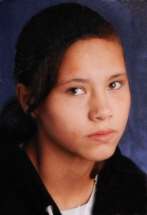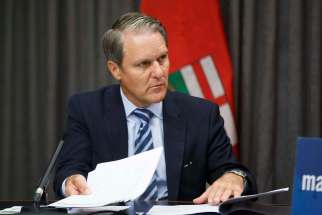Code orange called on city schools
Read this article for free:
or
Already have an account? Log in here »
To continue reading, please subscribe:
Monthly Digital Subscription
$0 for the first 4 weeks*
- Enjoy unlimited reading on winnipegfreepress.com
- Read the E-Edition, our digital replica newspaper
- Access News Break, our award-winning app
- Play interactive puzzles
*No charge for 4 weeks then price increases to the regular rate of $19.00 plus GST every four weeks. Offer available to new and qualified returning subscribers only. Cancel any time.
Monthly Digital Subscription
$4.75/week*
- Enjoy unlimited reading on winnipegfreepress.com
- Read the E-Edition, our digital replica newspaper
- Access News Break, our award-winning app
- Play interactive puzzles
*Billed as $19 plus GST every four weeks. Cancel any time.
To continue reading, please subscribe:
Add Free Press access to your Brandon Sun subscription for only an additional
$1 for the first 4 weeks*
*Your next subscription payment will increase by $1.00 and you will be charged $16.99 plus GST for four weeks. After four weeks, your payment will increase to $23.99 plus GST every four weeks.
Read unlimited articles for free today:
or
Already have an account? Log in here »
Hey there, time traveller!
This article was published 22/10/2020 (1873 days ago), so information in it may no longer be current.
Just as teachers and students had adjusted to an academic year unlike any other, Manitoba’s top doctor has prescribed a string of stricter protocols for schools in the province’s capital and northern region.
Schools in the Winnipeg area, Churchill and the Northern Regional Health Authority will enter the restricted “orange” level, starting Monday.
Dr. Brent Roussin made the announcement Thursday afternoon, at a news conference during which he indicated a COVID-19 outbreak had been identified at Arborgate School in La Broquerie. So far, three cases of the novel coronavirus had been identified at the K-8 school.
While Roussin acknowledged Manitoba schools have not proven to be sites where significant COVID-19 transmission is occurring, he said surging case counts have led to more exposures being identified in the buildings.
Daycares exempt — for now
Child care facilities will not enter the “orange” phase of pandemic restrictions when affected Manitoba schools do Monday — even though some daycares operate inside school buildings.
Both the province and Jodie Kehl, executive director of the Manitoba Child Care Association, confirmed Thursday daycares have been spared of stricter public health measures, at this time.
“Every day that Dr. (Brent) Roussin comes on, we all kind of hold our breath,” Kehl said, adding she is pleased there was no reason to make such a move.
Kehl said issues may arise if schools look to boot child care facilities operating inside their buildings to find extra space for physical distancing of students, but had not yet heard of any related concerns.
The restricted level means schools must ensure two metres of physical distancing “to the greatest extent possible” by rearranging furniture and repurposing empty rooms, only allow extracurricular activities if distancing is possible, cease indoor choir and the use of wind instruments, and cancel or postpone field trips.
Teachers, including substitutes, and other staff who move across cohorts will also be required to wear medical-grade face masks — albeit, not N95 respirators — next week.
While little is expected to change for high schoolers, many of which are already engaged in blended learning models to make room for physical distancing in classrooms, the announcement indicates there will be wider remote learning availability for younger students.
Schools “may” offer temporary remote learning options during the restricted level — a determination they will make based on current set-up and available staff, according to a spokesperson for Manitoba Education.
The spokesperson said the intent is to ensure continuity of learning in response to an anticipated hike in absenteeism and to create additional space in classrooms to maintain as much distancing as possible for those who continue in-class learning.
Given the vague phrasing, James Bedford of the Manitoba Teachers’ Society said he is left with many questions.
“Who will be responsible for teaching these students remotely? If it’s simply to be the child’s existing teacher to continue teaching that child, but to somehow do it remotely, where is the plan to give teachers time to plan for this? Is the technology in place, both for the student and the teacher to do this?” said Bedford, who represents upwards of 16,000 public educators in the province.
“Quite frankly, without answers to these questions, it really just sounds like a plan that’s setting teachers up to fail.”
School divisions are already interpreting expanded remote learning differently: Seven Oaks is offering the option to families extremely reluctant to send children to school; Winnipeg is providing remote school in schools where two metres of distancing between pupils isn’t achievable; St. James Assiniboia is giving all K-8 families the choice of home learning via print materials or technology.
“… it really just sounds like a plan that’s setting teachers up to fail.”
– James Bedford of the Manitoba Teachers’ Society
“We’ve seen this time and time again, that divisions are not on the same page,” said Lauren Hope, a Winnipeg parent, teacher and organizer with Safe September MB, a collective advocating for a back-to-school season with two-metre distancing and small class sizes since the summer.
Louis Riel is the only metro division that has touted its ability to measure all of its K-12 buildings to ensure two metres of space between students since Sept. 8. (The division said Thursday it will not provide remote learning as a universal option.)
The result has been duplex, triplex and quadruplex classrooms, models that require a teacher or several teachers to instruct students in various classrooms at the same time, with support and supervision from educational assistants.
“We’ve seen this time and time again, that divisions are not on the same page.”
– Lauren Hope, a Winnipeg parent, teacher and organizer with Safe September MB
Hope said she wants to know why the government hasn’t given clearer instructions; at the same time, she said the Thursday news provided a sense of personal relief because her children’s classrooms are set-up with “barely” one metre between peers at present.
Meantime, Bedford said he was disappointed the province has yet to mandate two-metre distancing. “It’s never been clear to us whether two metres is necessary or not.”
For now, the result is a patchwork of strategies across city schools, the norm since back-to-school plans were announced.
In Seven Oaks, superintendent Brian O’Leary said that means going classroom to classroom and figuring out how to make improvements before Monday. The new level, he said, could also require more teacher hires in the division, as well as teachers and students moving homerooms to vacant gymnasiums and libraries.
maggie.macintosh@freepress.mb.ca
Twitter: @macintoshmaggie

Maggie Macintosh reports on education for the Winnipeg Free Press. Funding for the Free Press education reporter comes from the Government of Canada through the Local Journalism Initiative.
Our newsroom depends on a growing audience of readers to power our journalism. If you are not a paid reader, please consider becoming a subscriber.
Our newsroom depends on its audience of readers to power our journalism. Thank you for your support.





